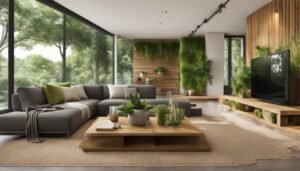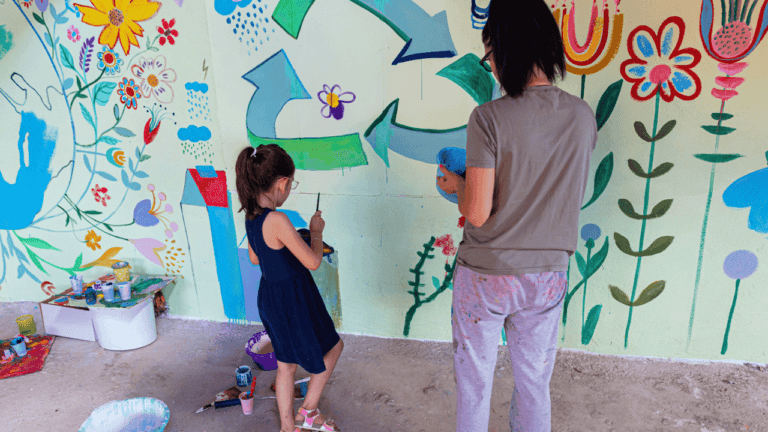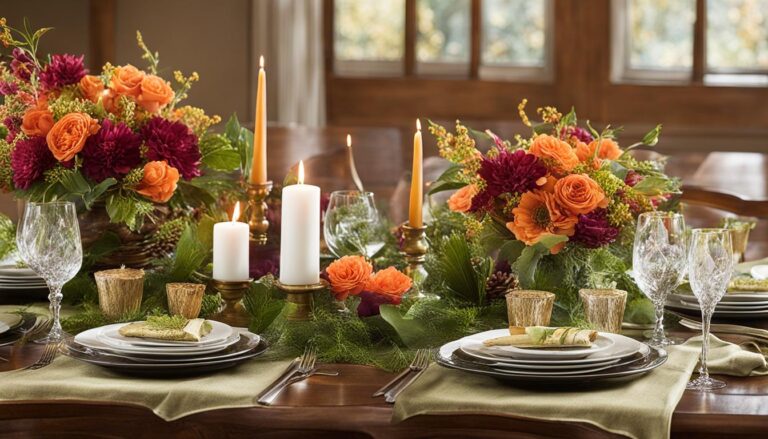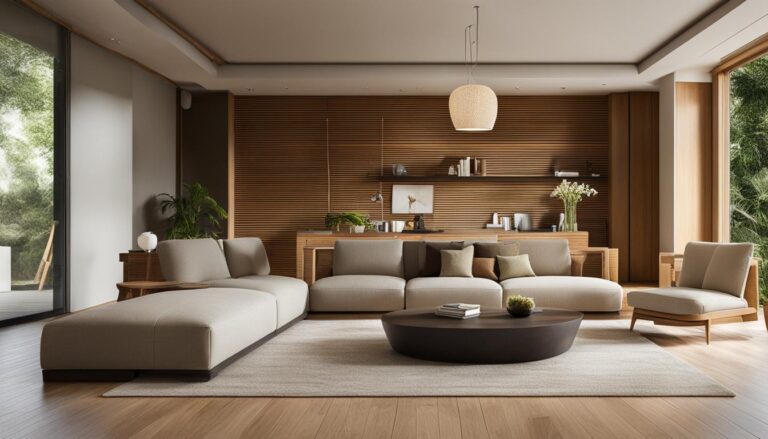In today’s world, the importance of sustainable living and eco-conscious choices cannot be overstated. As we strive to minimize our impact on the environment, adopting eco-friendly Home decor trends has become an integral part of creating stylish and beautiful living spaces that align with our green values.
Embracing eco-friendly home decor involves a range of practices and products that prioritize sustainability. From using natural materials to choosing energy-efficient lighting and incorporating indoor plants, there are numerous ways to make your home a greener space without compromising on style.
Key Takeaways:
- Embracing eco-friendly decor trends is a conscious choice to live in harmony with the environment.
- Sustainable style means choosing practices and products that have a minimal impact on the environment.
- Using natural materials like bamboo, reclaimed wood, and cork is an important aspect of eco-friendly decor.
- Energy-efficient lighting and low-VOC paints contribute to creating a green living space.
- Indoor plants not only enhance the aesthetics but also improve air quality.
Understanding Eco-Friendly Home Decor
Eco-friendly home decor, also known as sustainable or green home decor, involves making conscious choices to minimize the environmental impact of your interior design. By opting for sustainable choices and eco-friendly materials, you can create a beautiful home while supporting the planet’s health.
When it comes to eco-friendly home decor, there are several key elements to consider:
1. Sustainable Choices
Making sustainable choices means choosing products and practices that have a minimal impact on the environment. This includes using natural materials like bamboo, reclaimed wood, and cork. These materials are renewable and often have lower carbon footprints compared to their synthetic or non-renewable counterparts.
2. Green Home Decor
Green home decor encompasses a range of practices and products that contribute to a healthier planet. In addition to using sustainable materials, you can opt for low-VOC (Volatile Organic Compound) paints, which release fewer harmful chemicals into the air. Energy-efficient lighting, such as LED bulbs, reduces energy consumption and lowers utility bills.
3. Eco-Friendly Materials
Choosing eco-friendly materials is essential for sustainable home decor. Organic textiles, like cotton, hemp, or bamboo, are not only environmentally friendly but also contribute to a healthier indoor environment. These materials are free from harmful chemicals and pesticides, making them a safe choice for your home.
| Benefits of Eco-Friendly Home Decor | Examples |
|---|---|
| Reduced environmental impact | Using bamboo flooring instead of hardwood |
| Improved indoor air quality | Choosing low-VOC paint for walls |
| Supports sustainable practices | Buying furniture made from reclaimed wood |
Sustainable Interior Design
Sustainable interior design goes beyond choosing eco-friendly materials. It involves a holistic approach that considers functionality and energy efficiency. Creating a design that optimizes space and reduces the need for excess furniture and accessories is key. Investing in high-quality, durable furniture and choosing window treatments that regulate temperature and maximize natural light are also important aspects of sustainable interior design. Additionally, sourcing materials locally helps reduce transportation-related carbon emissions.
The Holistic Approach to Sustainable Interior Design
Sustainable interior design takes a holistic approach, considering the interplay of various elements to create a harmonious and environmentally friendly living space. Instead of focusing solely on individual design choices, it encompasses the overall harmony and balance of the space. By adopting a holistic approach, you can achieve both aesthetic appeal and sustainability.
Functional Design for Sustainability
A functional design is at the core of sustainable interior design. It involves thoughtful space planning and utilization, ensuring that every element serves a purpose and contributes to the overall functionality of the space. By optimizing the use of available space, you can reduce the need for excess furniture and accessories, minimizing waste and promoting sustainability.
Energy Efficiency in Sustainable Interior Design
Ener
Eco-Conscious Decorating
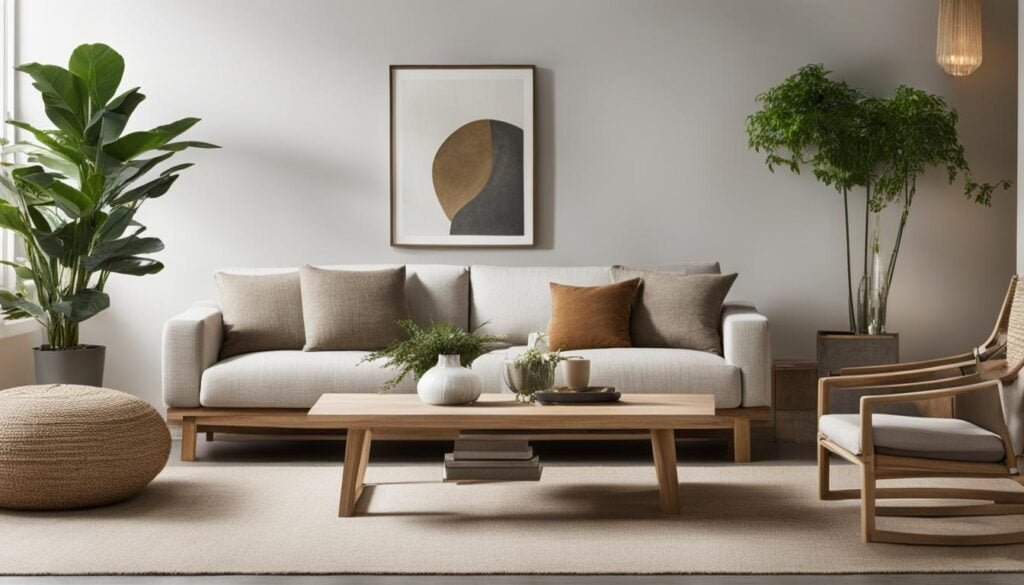
Eco-conscious decorating embraces a minimalist approach to decor, focusing on quality over quantity. By making thoughtful choices, you can minimize waste and reduce your ecological impact while creating a beautiful and sustainable living space.
One of the key principles of eco-conscious decorating is adopting a minimalist approach. Instead of filling your home with unnecessary items, choose a few high-quality pieces that bring joy and serve a purpose. This not only reduces consumption but also creates a clean and clutter-free environment.
Another way to embrace eco-conscious decorating is through DIY decor using recycled or upcycled materials. Get creative and give new life to old furniture or decor items by repurposing them. Not only does this add a personal touch to your home, but it also reduces waste and promotes sustainability.
Secondhand shopping is a fantastic option for eco-conscious decorators. Explore thrift stores or online marketplaces to find unique and pre-loved furniture and decor items. By shopping secondhand, you extend the lifespan of these items and reduce the demand for new products, ultimately reducing your environmental footprint.
Repair and maintenance are integral parts of eco-conscious decorating. Instead of discarding items at the first sign of wear and tear, learn how to repair and maintain them. Simple fixes like reupholstering a chair or repainting a table can significantly prolong the life of your furniture, reducing waste and promoting sustainability.
Green Home Accessories
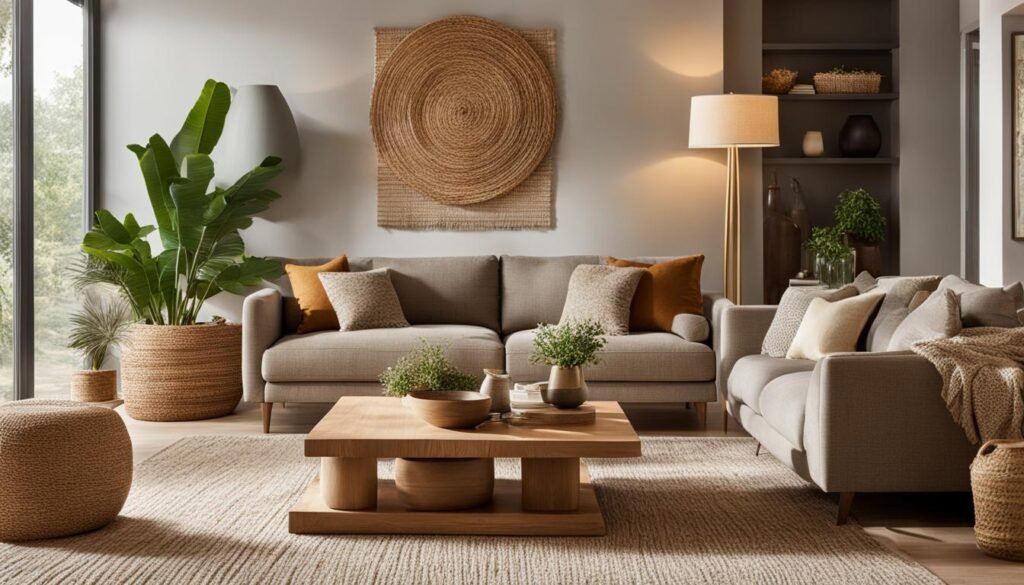
Accessories play a crucial role in adding the perfect finishing touches to any room. When it comes to eco-friendly home decor, there are plenty of green options that combine style and sustainability. By incorporating organic textiles, handmade crafts, recycled glass, natural fiber rugs, and vintage and antique finds, you can create a unique and environmentally conscious living space.
Organic Textiles
Opt for organic textiles such as cotton, hemp, or bamboo when decorating your home. These natural materials are grown without the use of harmful pesticides and fertilizers, making them better for your health and the environment. Choose organic cotton cushions, throws, and curtains to add comfort and beauty to your living spaces.
Handmade Crafts
Support local artisans and add a personal touch to your home by purchasing handmade crafts. Consider incorporating handcrafted pottery or handwoven baskets to bring a sense of craftsmanship and authenticity to your decor. Not only do these unique pieces add charm, but they also support sustainable practices and preserve traditional craftsmanship.
Recycled Glass
Decorate your space with vases, candleholders, and sculptures made from recycled glass. Recycling glass not only reduces waste but also conserves energy and resources. The beauty and transparency of recycled glass make it a perfect choice for adding elegance and artistry to your home decor.
Natural Fiber Rugs
Choose rugs made from natural fibers like sisal or wool to enhance the natural aesthetics of your living space. Natural fiber rugs are not only sustainable but also durable and long-lasting. Their earthy textures and tones create a cozy and welcoming environment, making them an excellent choice for eco-friendly home decor.
Vintage and Antique Finds
Explore vintage and antique shops to discover unique, one-of-a-kind home accessories that tell a story and add character to your space. Vintage and antique finds not only bring a sense of history but also promote reuse and a circular economy. Incorporating these timeless pieces into your decor creates a sense of nostalgia and individuality.
Sustainable Furniture Options
Furniture plays a pivotal role in eco-friendly home decor. By choosing sustainable furniture options, you can create a stylish and environmentally conscious living space. Consider the following eco-friendly materials and designs:
Bamboo Furniture
Bamboo is a rapidly renewable resource that grows quickly and requires no pesticides or fertilizers. It is a durable and versatile material, perfect for creating beautiful and stylish furniture pieces. From bamboo chairs and tables to shelves and bed frames, incorporating bamboo furniture adds a touch of natural elegance to your home.
Reclaimed Wood
Reclaimed wood furniture adds rustic charm and character to any space. By using reclaimed wood that would otherwise go to waste, you not only prevent deforestation but also give new life to old materials. From reclaimed wood dining tables to coffee tables and bookshelves, these pieces reflect a commitment to sustainability while adding unique style to your home.
Modular Furniture
Modular furniture offers a versatile and adaptable solution for your living space. These pieces can be rearranged and reconfigured to fit different needs and spaces, eliminating the need for new furniture. By investing in modular sofa sets, shelving systems, or storage units, you can maximize the functionality of your home while minimizing waste.
FSC-Certified Wood
FSC-certified wood ensures that the furniture you choose comes from sustainably managed forests. The Forest Stewardship Council (FSC) sets strict environmental and social standards for responsible forest management, including the protection of wildlife habitats and the rights of indigenous communities. Look for the FSC certification label when purchasing wooden furniture to support ethical and eco-friendly practices.
Multi-Functional Pieces
Choosing multi-functional furniture pieces is a smart way to optimize space utility. Sofa beds, ottomans with hidden storage, and dining tables with built-in extensions are just a few examples of multi-functional designs. These pieces not only save space but also reduce the need for additional furniture, minimizing waste and maximizing functionality.
By incorporating bamboo furniture, reclaimed wood pieces, modular designs, FSC-certified wood, and multi-functional furniture into your home, you can create a sustainable and stylish living space that reflects your commitment to the environment.
Eco-Friendly Home Improvement

When it comes to creating a sustainable living space, home improvement projects play a crucial role. By incorporating eco-friendly elements into your home, you can reduce your carbon footprint and promote a greener future. Here are some key areas to focus on when considering eco-friendly home improvements:
Solar Panels
Harness the power of the sun by installing solar panels on your rooftop. Solar panels convert sunlight into clean, renewable energy, helping you reduce your reliance on fossil fuels and minimize your electricity bills. By investing in solar energy, you can make a positive impact on the environment while enjoying long-term energy savings.
Energy-Efficient Appliances
Avoid energy wastage by upgrading to energy-efficient appliances. Look for appliances with high Energy Star ratings, indicating that they meet strict energy efficiency standards. Energy-efficient appliances consume less electricity, reducing both your carbon footprint and monthly utility costs. From refrigerators and washing machines to air conditioners and water heaters, there are energy-efficient options available for every aspect of your home.
Water-Saving Fixtures
Conserving water is essential for sustainable living. Install water-saving fixtures such as low-flow faucets, showerheads, and toilets to minimize water consumption without compromising functionality. These fixtures use less water without sacrificing performance and can significantly reduce your household’s water usage.
Insulation
Proper insulation is crucial for energy efficiency in your home. Well-insulated walls, floors, and roofs help regulate temperature, reducing the need for excessive heating or cooling. Insulating your home effectively improves energy efficiency, reduces energy bills, and creates a more comfortable living environment. Consider using eco-friendly insulation materials like cellulose or recycled denim insulation to further enhance sustainability.
Green Roof
If feasible, consider installing a green roof or living wall. A green roof consists of vegetation growing on the rooftop, providing insulation, reducing stormwater runoff, and increasing biodiversity in urban areas. Green roofs improve insulation, filter air pollutants, and create a beautiful and sustainable addition to your home. Enjoy the benefits of a greener environment while reducing your ecological impact.
| Eco-Friendly Home Improvement Options | Benefits |
|---|---|
| Solar Panels | – Harnesses clean, renewable energy – Reduces reliance on fossil fuels – Reduces electricity bills |
| Energy-Efficient Appliances | – Consumes less electricity – Reduces carbon footprint – Lowers utility costs |
| Water-Saving Fixtures | – Minimizes water consumption – Preserves water resources – Saves on water bills |
| Insulation | – Regulates temperature – Reduces heating and cooling costs – Enhances energy efficiency |
| Green Roof | – Provides insulation – Reduces stormwater runoff – Increases biodiversity |
Conclusion
Embracing eco-friendly decor trends is not just a passing fad—it is a conscious choice to create a sustainable lifestyle and live in harmony with the environment. By adopting sustainable practices and making eco-friendly choices in your interior design, you can transform your living space into a reflection of your style and values.
One of the key aspects of eco-friendly living is using natural materials and energy-efficient lighting. Incorporating eco-conscious decorating strategies, such as a minimalist approach, DIY decor, and secondhand shopping, can significantly reduce your environmental footprint while adding a personal touch to your home. Additionally, opting for sustainable furniture options, like bamboo furniture and reclaimed wood pieces, not only enhances the aesthetic appeal of your space but also supports efforts to combat deforestation.
Creating an eco-friendly living space is not just about aesthetics—it is about mindful living. By making conscious choices, you can contribute to a healthier and more sustainable future. Start small by incorporating organic textiles, handmade crafts, and recycled glass into your decor. Consider investing in energy-efficient appliances, water-saving fixtures, and green home improvement projects, like solar panels or a green roof, to further minimize your environmental impact.
Remember, sustainable living is an ongoing journey. Take the first step towards a greener home today, and let your space reflect your commitment to a sustainable future. By embracing eco-friendly decor trends and practicing mindful living, you can create a beautiful, eco-friendly living space that not only benefits you but also contributes to a healthier planet for future generations.
Frequently Asked Questions
What is eco-friendly home decor?
Eco-friendly home decor involves practices and products that minimize harm to the environment while creating beautiful and stylish living spaces. It includes using natural materials, upcycling, choosing energy-efficient lighting, and incorporating indoor plants, among other sustainable choices.
How can I embrace eco-friendly decor in my home?
Embracing eco-friendly decor involves making sustainable choices. You can use natural materials like bamboo, reclaimed wood, and cork, as well as upcycle and repurpose old furniture and decor items. Opt for low-VOC paints and energy-efficient lighting. By making these choices, you can create a beautiful home while supporting the planet’s health.
What is sustainable interior design?
Sustainable interior design goes beyond using eco-friendly materials. It involves a holistic approach that considers functionality and energy efficiency. This includes optimizing space, investing in high-quality, durable furniture, choosing window treatments that regulate temperature and maximize natural light, and sourcing materials locally to reduce carbon emissions.
How can I decorate my home in an eco-conscious way?
Eco-conscious decorating focuses on making thoughtful choices to minimize waste and reduce ecological impact. Adopting a minimalist approach, DIY decor using recycled or upcycled materials, shopping secondhand, and learning how to repair and maintain items are all ways to decorate your home in an eco-conscious way.
What are some green home accessories I can use?
There are many green options for eco-friendly home decor. Opt for organic textiles like cotton, hemp, or bamboo for cushions, throws, and curtains. Support local artisans by purchasing handmade crafts such as pottery or handwoven baskets. Decorate your space with vases, candleholders, and sculptures made from recycled glass. Choose rugs made from natural fibers like sisal or wool and explore vintage and antique shops for unique one-of-a-kind home accessories.
What are some sustainable furniture options?
Bamboo is a rapidly renewable resource and makes for durable and stylish furniture. Reclaimed wood furniture adds rustic charm and helps reduce deforestation. Modular furniture adapts to different needs and spaces, reducing the need for new pieces. Furniture certified by the Forest Stewardship Council (FSC) ensures sustainably managed wood. Choosing multi-functional pieces like sofa beds or dining tables with storage maximizes space utility.
How can I make eco-friendly home improvements?
Home improvement projects offer an opportunity to integrate sustainability into your living space. Consider installing solar panels to harness clean, renewable energy. Upgrade to energy-efficient appliances with high Energy Star ratings to reduce energy consumption. Install water-saving fixtures like low-flow faucets and toilets to conserve water. Proper insulation and well-sealed windows and doors help reduce heating and cooling costs. Creating a green roof or living wall can improve insulation and support local biodiversity if feasible.
Why should I embrace eco-friendly decor trends?
Embracing eco-friendly decor trends is not just a trend but a conscious choice to live in harmony with the environment. By adopting sustainable practices and making eco-friendly choices in your interior design, you can create a space that reflects your style and values. From using natural materials and energy-efficient lighting to incorporating eco-conscious decorating strategies and sustainable furniture options, there are endless possibilities for creating a beautiful, eco-friendly living space.

